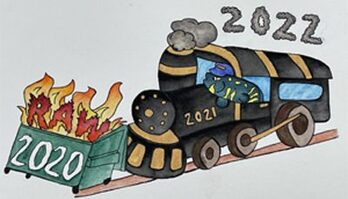Conservation Abstracts
Watch Videos (Login required)
|
Nautilus Conservation in the 22nd Century: Where do we go from here? Greg Barord, Central Campus Full Abstract
In November 2021, the Save the Nautilus organization celebrated its 10th anniversary! Over that decade, we have collaborated with universities, governments, communities, and non-governmental organizations to address some big knowledge gaps in our understanding of nautiluses to support conservation efforts. That led to local, national, and international regulations of nautiluses to curb their population decline because of unregulated fishing practices. However, there are plenty of examples of species that have been regulated under various agreements, but conservation efforts are not successful. The best/worst example of this is Phocoena sinus, the vaquita, and Totoaba macdonaldi, the totoaba, whose populations are still in decline even though both species have been listed on Appendix I of the Convention on International Trade in Endangered Species since the 1970’s. With these stopgap measures now in place, we can continue investigating aspects of the natural history of nautiluses that remain a mystery, such as reproduction, diet, sedimentation, life span, species relatedness, and the role nautiluses play in their deep-sea habitat. Successful conservation does not happen on paper. Successful conservation is a result of collaboration of a diverse group of stakeholders, education and opportunity at all levels, and a commitment to improving outcomes that benefit the species and people. As the 22nd Century creeps closer and closer, the goal should be to see nautiluses disappear, not from the wild, but from endangered species lists and that is what we aim to work towards. |
A new species of Nautilus from Fiji: collection, husbandry, and education (2020) Greg Barord, Central Campus Full Abstract
The Fijian Islands are home to a population of nautiluses that are geographically isolated from all other nautiluses. This geographic isolation suggests, then, that the nautiluses of Fiji may also be genetically distinct from other nautiluses and represent a new species. After the 2017 CITES legislation to regulate nautilus exports, a five- year project was started in Fiji to support in situ and ex situ conservation efforts. As part of this plan, additional partners and stakeholders were brought to the table to continue population surveys, provide training/education to local students, and refine nautilus husbandry. With the strong likelihood of the Fijian nautiluses being their own distinct species, it is imperative to have a management plan in place to ensure they receive effective stewardship. The successful use of this model in Fiji can also then be applied to other nautilus range states throughout the Pacific to promote education and conservation. These initial efforts have already led to the description of new species of nautiluses in Vanuatu and American Samoa leading to additional questions surrounding the differences of their nautral history, husbandry considerations, and outreach possibilities. |
Making the stars align: Why aquariums are key players
in the recovery of the critically endangered sunflower sea star (Pycnopodia helianthoides) Ashley Kidd, University of Florida Full Abstract
The sunflower star, Pycnopodia helianthoides, is a keystone predator of sub-tidal kelp and rocky reef ecosystems from Alaska, USA to Baja, Mexico. They shape the benthic communities they inhabit, preying primarily on bivalves and other echinoderms. Starting in 2013, a sea star wasting event (SSW) was observed in twenty-two Asteroidea species along the Pacific coast, acutely affecting P. helianthoides, reducing the population by ninety percent. The most extreme loss was seen in the southern portion of their range, and Pycnopodia are now considered extirpated from California and Oregon. P. helianthoides was listed as critically endangered across its entire range by the International Union of Concerned Scientists (IUCN) in August, 2020. One of the IUCN action items listed starting a captive rearing program for P. helianthoides reintroduction, as it is unlikely sea stars will be able to naturally recruit to coastal waters where population densities are too low. Researchers at the University of Washington Friday Harbor Labs have shown initial success for the closed loop aquaculture of this species. Reintroducing P. helianthoides could provide one solution to maintaining resilient kelp ecosystems by reestablishing this keystone predator. Results from a survey sent through the aquatic info listserv in September 2021, identified aquariums that are uniquely poised as collaborators in this new conservation initiative, with four Aquariums holding valuable genetic broodstock from wild populations that no longer exist. Further investigation identified facilities with appropriate aquaculture resources and staff expertise to begin formal discussions to promote this species as an AZA SAFE candidate. |

